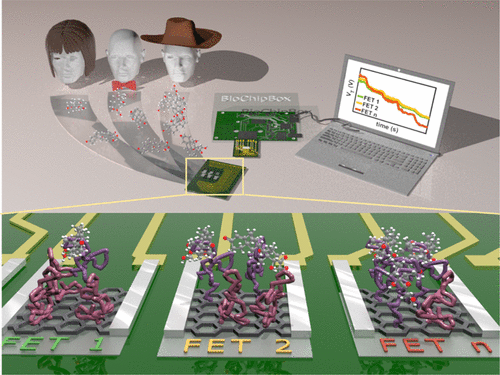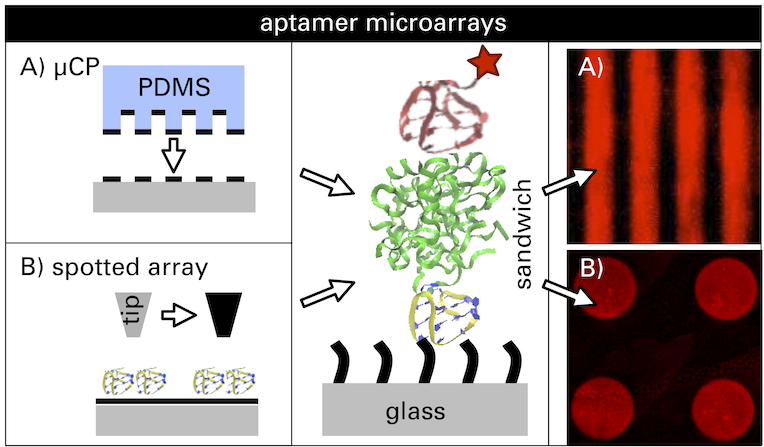
Surface Functionalization Strategies for Enhanced Nanoelectronic Sensor Performance
Within an ongoing research line at our institute, nanomaterial-based electronic sensors are being developed for specific analyte detection. This thesis will focus on improving sensor sensitivity by optimizing surface functionalization strategies using µ-contact printing and/or nano plotting.
In the first phase, functionalization protocols will be developed and tested on planar surfaces. The student is expected to explore at least one of the two techniques, become familiar with the respective setup, and optimize the process according to the final application needs of the nanosensors. The success of the surface functionalization will be verified using fluorescence microscopy.
The selected methods are based on two complementary technologies, of which the student can choose one:
µContact Printers use a proprietary stamping technology combining a precise Z-drive with pneumatic actuation. This ensures reproducible and accurate printing results.
The Nano-Plotter™ system applies piezoelectric nanolitre pipettes for highly precise liquid handling. These drop-on-demand pipettes are compatible with a broad range of (bio-)chemical substances and cover volumes from a few picolitres to several microlitres.
In the second part of the thesis, the optimized functionalization approach will be transferred to nanoelectronic sensor devices, followed by analyte detection experiments.
The research plan will include:
Development and optimization of surface patterning on planar and nanoelectronic sensors
Application of µ-contact printing and/or nano plotting for functionalization
Validation via fluorescence microscopy
Sensor performance evaluation through analyte detection
Parameter adjustment based on experimental data
An independent and proactive work style is expected, along with adaptability to tailor the approach to the specific requirements of the sensor platform.
Starting date: ASAP













Surface Functionalization Strategies for Enhanced Nanoelectronic Sensor Performance
Within an ongoing research line at our institute, nanomaterial-based electronic sensors are being developed for specific analyte detection. This thesis will focus on improving sensor sensitivity by optimizing surface functionalization strategies using µ-contact printing and/or nano plotting.
In the first phase, functionalization protocols will be developed and tested on planar surfaces. The student is expected to explore at least one of the two techniques, become familiar with the respective setup, and optimize the process according to the final application needs of the nanosensors. The success of the surface functionalization will be verified using fluorescence microscopy.
The selected methods are based on two complementary technologies, of which the student can choose one:
µContact Printers use a proprietary stamping technology combining a precise Z-drive with pneumatic actuation. This ensures reproducible and accurate printing results.
The Nano-Plotter™ system applies piezoelectric nanolitre pipettes for highly precise liquid handling. These drop-on-demand pipettes are compatible with a broad range of (bio-)chemical substances and cover volumes from a few picolitres to several microlitres.
In the second part of the thesis, the optimized functionalization approach will be transferred to nanoelectronic sensor devices, followed by analyte detection experiments.
The research plan will include:
Development and optimization of surface patterning on planar and nanoelectronic sensors
Application of µ-contact printing and/or nano plotting for functionalization
Validation via fluorescence microscopy
Sensor performance evaluation through analyte detection
Parameter adjustment based on experimental data
An independent and proactive work style is expected, along with adaptability to tailor the approach to the specific requirements of the sensor platform.
Starting date: ASAP











